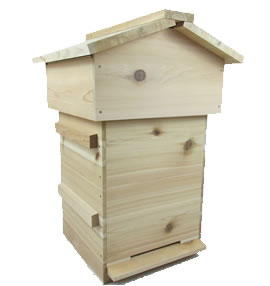Hive Body: Understanding the Importance and Functions of Hive Bodies in Beekeeping
A hive body, also known as a brood box or deep super, is a key component of a beehive used in beekeeping. It serves as the primary living space for the honeybee colony, providing ample room for brood rearing, food storage, and overall hive development. Understanding the importance and functions of hive bodies is essential for beekeepers to effectively manage their hives and support healthy bee colonies.
Importance of Hive Bodies
Hive bodies play a critical role in beekeeping for several reasons:
- Brood Rearing: Hive bodies provide ample space for the queen bee to lay eggs and for worker bees to rear brood. The temperature and humidity within hive bodies are carefully regulated by worker bees to ensure optimal conditions for brood development.
- Food Storage: Bees store pollen and honey within hive bodies to sustain the colony during periods of scarcity. Hive bodies serve as a pantry for bees, providing them with essential nutrients and energy sources to survive and thrive.
- Population Expansion: As the colony grows and expands, bees require additional space for brood rearing and food storage. Hive bodies allow beekeepers to accommodate population growth and prevent overcrowding within the hive.
- Structural Support: Hive bodies provide structural support for the hive, serving as the foundation upon which additional hive components are stacked. Properly constructed and maintained hive bodies contribute to the stability and longevity of the hive.
Functions of Hive Bodies
Hive bodies serve several important functions in beekeeping:
- Brood Chamber: Hive bodies serve as the brood chamber where the queen bee lays eggs and the worker bees rear brood. Brood frames within hive bodies contain developing eggs, larvae, and pupae, ensuring the growth and development of the honeybee colony.
- Food Storage: Hive bodies contain frames filled with stored pollen and honey, providing bees with essential nutrients and energy sources. Bees access stored food during times of scarcity or inclement weather when foraging is limited.
- Temperature Regulation: Worker bees regulate the temperature within hive bodies to maintain optimal conditions for brood development. They use their bodies to generate heat and fan their wings to circulate air, ensuring proper temperature and humidity levels.
- Space Management: Hive bodies provide beekeepers with space to manage the colony and perform hive inspections. Beekeepers can add or remove frames as needed to accommodate population growth, prevent swarming, and maintain hive health.
Conclusion
In conclusion, hive bodies are essential components of a beehive, providing honeybee colonies with living space, brood rearing areas, and food storage. Understanding the importance and functions of hive bodies is crucial for beekeepers to support healthy hive development and maximize honey production.
Whether you're a beginner or experienced beekeeper, proper management of hive bodies is essential for successful beekeeping and ensuring the health and productivity of your honeybee colonies.



